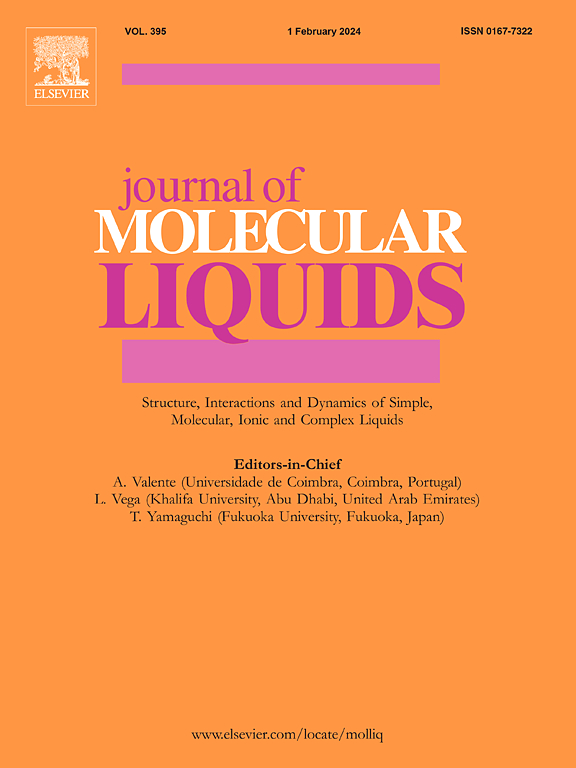Vapor–liquid equilibrium behavior and quantum chemical calculations for bioethanol + water + choline chloride:urea + potassium acetate
IF 5.3
2区 化学
Q2 CHEMISTRY, PHYSICAL
引用次数: 0
Abstract
Extractive distillation is an effective method for separating azeotropic mixtures, and its success depends on the careful selection of distillation entrainers. Recently, deep eutectic solvents (DESs) have emerged as a novel and environmentally friendly class of entrainers. However, most research has focused on on pure DES entrainers. Developing new DESs remains a challenging task that requires significant time to identify suitable components and mixing ratios that form low freezing points. In this study, the well-known azeotropic mixture of biomass fuel ethanol and water was used as the model system. The distillation efficiency of the pure DES (choline chloride:urea 1:2, mol/mol) was significantly enhanced by adding just 5 wt% potassium acetate, leading to a 40 % reduction in the usage of single DES. It was found that increasing the hybrid entrainer content from 0 to 34.8 wt% significantly raised the relative volatility of ethanol/water mixture near the azeotropic point from 0.99 to 3.29. To gain a deeper understanding of ethanol/water separation across the entire concentration range, the pseudobinary and pseudoternary vapor–liquid equilibria (VLE) of the ethanol/water + hybrid entrainer system were investigated, and the binary energy parameters of the Non-Random-Two-Liquid (NRTL) model were regressed. Lastly, quantum chemical calculations of the separation mechanism were conducted, covering several aspects: geometry optimizations of the individual components and complexes, electrostatic potential calculations, interaction energy assessments, analysis of hydrogen-bond donors and acceptors, examination of the location and bond lengths of intermolecular hydrogen bonds, evaluation of the influence on vibrational frequencies, and natural bond orbital analysis (NBO).
求助全文
约1分钟内获得全文
求助全文
来源期刊

Journal of Molecular Liquids
化学-物理:原子、分子和化学物理
CiteScore
10.30
自引率
16.70%
发文量
2597
审稿时长
78 days
期刊介绍:
The journal includes papers in the following areas:
– Simple organic liquids and mixtures
– Ionic liquids
– Surfactant solutions (including micelles and vesicles) and liquid interfaces
– Colloidal solutions and nanoparticles
– Thermotropic and lyotropic liquid crystals
– Ferrofluids
– Water, aqueous solutions and other hydrogen-bonded liquids
– Lubricants, polymer solutions and melts
– Molten metals and salts
– Phase transitions and critical phenomena in liquids and confined fluids
– Self assembly in complex liquids.– Biomolecules in solution
The emphasis is on the molecular (or microscopic) understanding of particular liquids or liquid systems, especially concerning structure, dynamics and intermolecular forces. The experimental techniques used may include:
– Conventional spectroscopy (mid-IR and far-IR, Raman, NMR, etc.)
– Non-linear optics and time resolved spectroscopy (psec, fsec, asec, ISRS, etc.)
– Light scattering (Rayleigh, Brillouin, PCS, etc.)
– Dielectric relaxation
– X-ray and neutron scattering and diffraction.
Experimental studies, computer simulations (MD or MC) and analytical theory will be considered for publication; papers just reporting experimental results that do not contribute to the understanding of the fundamentals of molecular and ionic liquids will not be accepted. Only papers of a non-routine nature and advancing the field will be considered for publication.
 求助内容:
求助内容: 应助结果提醒方式:
应助结果提醒方式:


